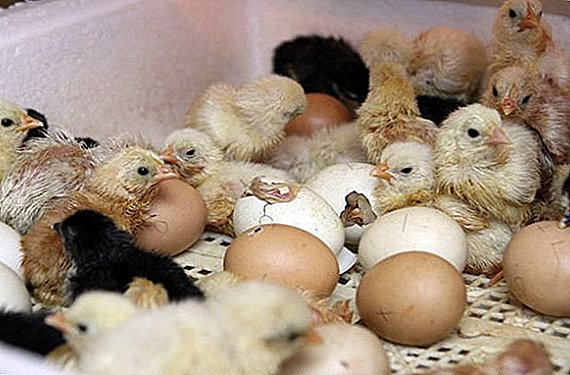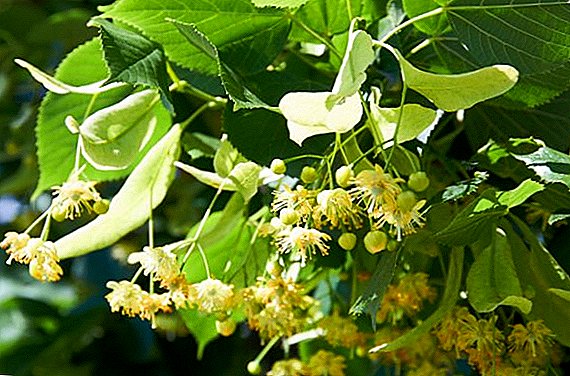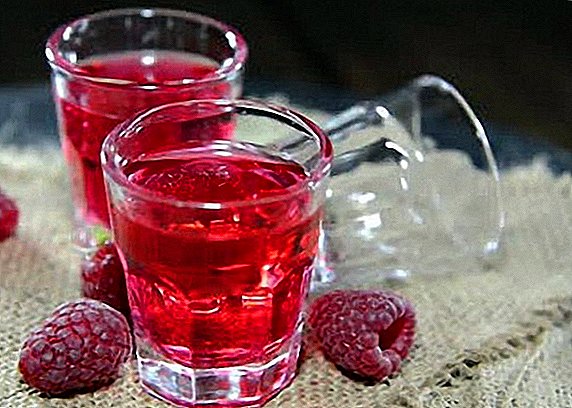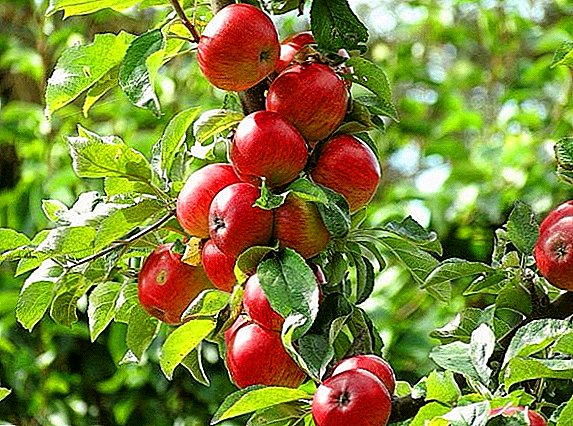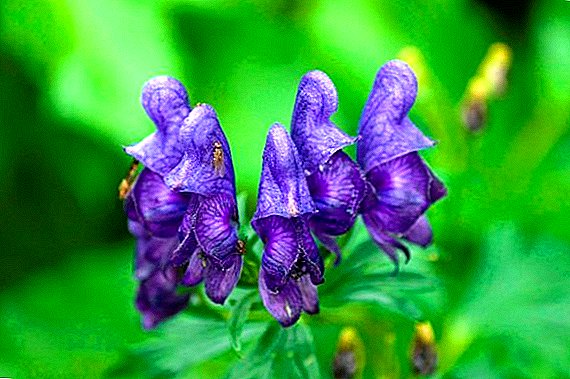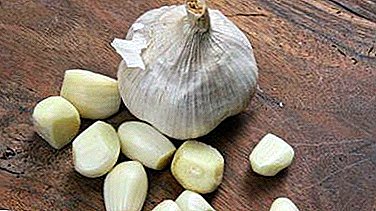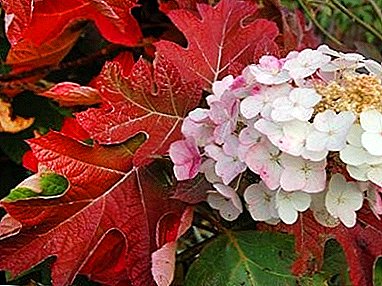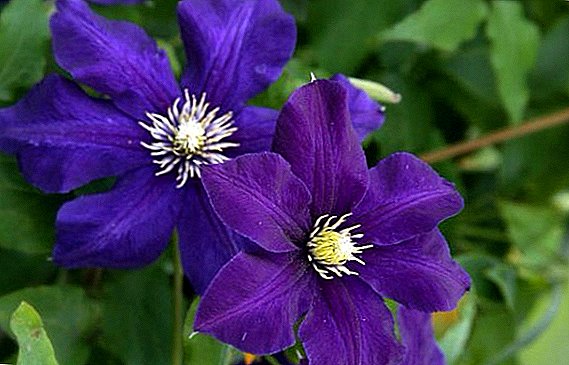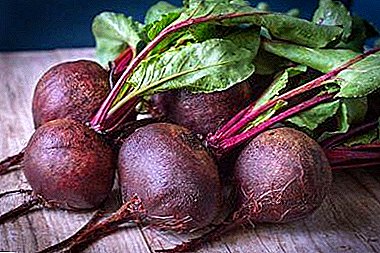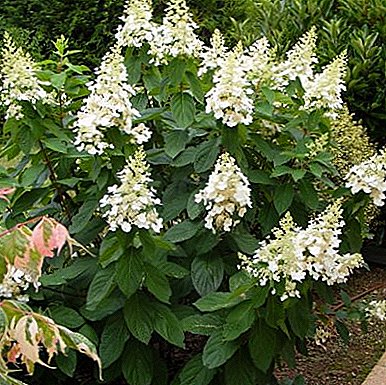
The wild ancestor of these paniculate hydrangeas really grows on the Kyushu island of the Japanese archipelago, has strong red-brown branches and an openwork fan-shaped crown of saturated green, jagged, slightly glossy leaves with red petioles.
 From July to October, the bush, up to three meters high, is covered with white inflorescences, exuding a honeyed scent.
From July to October, the bush, up to three meters high, is covered with white inflorescences, exuding a honeyed scent.
When they fade, they get a pink hue.
In autumn, the leaves turn yellow and fall to winter.
The same quality panicle hydrangea kyushu preserves in landscape gardening culture. Sufficient winter hardiness (up to -34ºС) allows you to successfully grow this shrub in the middle lane, in open ground conditions.
Panicle hydrangea Kiushu in the garden
Choosing a place
Adult specimens hardly recover after transplantation. Therefore, the place where the sapling will grow and develop should be long-term.
Place for landing should be sheltered from strong wind and enough well lit; Shading is possible up to a penumbra.
IMPORTANT: the landing site should not descend from the layers of snow from the roof, as not enough dense wood can not withstand this additional load.
Priming
The soil should have an acid reaction and combine friability with adequate nutritional value.
Its composition may include peat, humus, sod, leaf soil and sand in equal quantities.
A mixture of peat and humus with garden soil in equal proportions is also used.
 Landing
Landing
The best time to place in the open field - Spring. Bushes that have wintered in the ground can be planted soon after thawing of the soil. Greenhouses with leaves should be planted only at the end of spring, at the end of the frost period.
The dimensions of the landing pit should provide space for the growth of the root system. The usual "measures" - the length and width from 0.5 to 0.8 meters. The depth may be somewhat less, since the surface roots expand more in breadth than in depth.
If the soil is clay, the bottom is provided with a drainage layer of crushed stone, pebbles, brick or ceramic paving.
Sandy soil, by contrast, compacted with a layer of clay, which is placed at the bottom of the planting pit.
IMPORTANT: With a high level of groundwater, landing on high ground is obligatory.
A layer of soil mixture and a carefully spread root system, pre-moistened in a bucket of water, are poured into the prepared landing pit.
Dust the soil and gently seal it. As a result, the root neck should be flush with the soil surface, but not deeper.
ATTENTION: Abundantly watered. Then the ground is covered with a layer of mulch (peat chips, crushed bark), so that the soil under the bush longer retain moisture.
Watering
Optimal water for irrigation should be soft, ideal - rainwater.
Tap water should be well defended. It is useful from time to time. add some lemon juice or vinegar.
 Pancake hydrangea Kyushu, compared with other types of hydrangeas, is relatively drought-resistant, but in dry summers and with a lack of moisture in the spring, regular plentiful watering.
Pancake hydrangea Kyushu, compared with other types of hydrangeas, is relatively drought-resistant, but in dry summers and with a lack of moisture in the spring, regular plentiful watering.
Top dressing
The plant responds well to a complex mineral supplement. The best option is mixtures designed and intended for hydrangeas. They can be periodically supplemented with organic compounds.
Terms of fertilizer application are coordinated with the main phases of growth and development:
spring feeding supports the education of young shoots;
June contributes to the abundant formation of buds;
summerduring flowering, prolong it. These feedings are carried out twice a month. The potassium and phosphoric components are enhanced, while the nitrogen component is decreasing.
Autumn, before the dormant period, includes superphosphate and potassium sulfate.
 Growth and pruning
Growth and pruning
Rapidly growing (25 cm per year) bushes can and should be spring pruning, as the flower buds are formed on the shoots of the current year and are revealed the same summer.
Moreover, heavy pruning shoots up to the level of three to five buds stimulates mass formation of powerful young shoots with large inflorescences.
Old bushes rejuvenate, cutting them to the level of perennial wood or even on a stump.
Sophisticated pruning can to form this hydrangea as graceful trees.
For this purpose, a vertical leading shoot and 4-5 “accompanying” lateral shoots are isolated on the young plant, the remaining shoots are removed, and the lateral shoots are pinched off. Give the "leader" to reach a height of 1-1.5 meters.
Then its top is cut off, thereby stimulating the formation of skeletal branches of the crown. Side "support" is removed. Form a crown with growth.
Wintering
An adult paniculate hydrangea does not need a winter shelter. Young plants, especially in the first wintering, bend down to the ground and cover with spruce branches.
For mature tall bushes with loose wood, dangerous heavy snowfall.
So that the branches do not break off, they are tied in one bundle and attached to a reliable support.

Bloom
The abundant flowering of fragrant "sweeper" begins in July and lasts until mid-autumn.
The shade of the inflorescences depends on their age — the older, the rosier — and the acidity of the soil: the flowers become brighter the acidic the soil is.
This feature is widely used to enhance the decorative flowering, especially as acidified, soft water is useful for plants.
On young bushes that spend the first summer in the ground, the inflorescences are removed so that the plant is strong enough and does not spend strength on flowering.
"Panels" inflorescences are long cut, and when dried, they retain their shape and color.
IMPORTANT: All inflorescences should be cut to the first heavy snowfalls, since sticking snow on them will create an unbearable load for fragile branches.

Breeding
The seeds of paniculate hydrangea, Kyushu, as a rule, do not ripen in the middle zone. Therefore, multiply it only vegetatively: layering and cuttings.
Reproduction by layering. In the spring or at the end of summer, the lower branch is bent to the ground, fixed in the middle, slightly buried and dropped in this place. The upper part of the branch is tied to a vertical support. During the year, the prikopannaya part forms a sufficiently developed root system. At this time, the new plant is separated from the parent.
Reproduction cuttingsand. This method has an optimal spring term, the material is collected from waste after pruning.
Cuttings at 4-5 internodes are cut from selected branches and put them for two days in a weak solution of a root stimulator. Then planted in a mixture of sand and peat, deepening the two buds. Planting is covered with a plastic film, moistened, regularly aired and kept at a temperature of 14-17 degrees. Rooting takes no more than a month.
Diseases and pests
Hydrangea on the site with optimal conditions for it is resistant to disease.
On soils limed or oversaturated with humus, a plant may develop chlorosis: leaves, except the central vein, become izhelta-light.
In this case, spend a few watering. potassium nitrate solution with a concentration of 4g / l, and after 3 days - ferrous sulfate solution the same concentration.
 Downy mildew, characteristic dark oily, gradually spreading spots on the leaves and stems, appears at a temperature of 18-20 degrees and high atmospheric humidity.
Downy mildew, characteristic dark oily, gradually spreading spots on the leaves and stems, appears at a temperature of 18-20 degrees and high atmospheric humidity.
An effective remedy for such a disease - spraying with copper-soap solution: 15 g of copper sulfate and 150 g of green soap on a bucket of water.
Gray rotthat develops in the summer with high humidity will require removal of the affected leaves and shoots, followed by treatment of the bush fungicides.
With a low humidity on the plant can settle aphid and spider mites. They can be removed with soapy water; however, in such cases it is most effective to use systemic insecticides.
As a preventive measure, you need to get rid of weed vegetation, which serves as a haven and breeding ground for these pests.
Paniculata hydrangea Kyushu can withstand not only severe winter cold, but also a significant pollution of the atmosphere.
Long-lasting fragrant flowering of these perennial bushes-trees from Kyushu Island in the open ground of the middle zone requires little - a properly chosen planting place, simple maintenance and optimal watering.
A photo
See photos of hydrangea Kiushu:




Useful information
You can get acquainted with other materials about hydrangea garden:
- How to properly care for bobo paniculate hydrangea? Growing and preparing for winter
- How to properly care for Hydrangea Limelight?
- How does the Duboliferous hydrangea overwinter?
- Frost-resistant hydrangea Pinky Winky on your site
- Hortensia paniculata grandiflora - features of care and reproduction in the garden plot
- Hydrangea curly (petiolate, climbing) - a hedge in your garden!
- Hydrangea tree Annabelle - snow-white decoration of your site
- Tree hydrangea in your garden - planting and care, breeding, wintering
- How to make friends with serrated hydrangea?
- Frost-resistant large-leaved hydrangea
- How to care for a panicle hydrangea phantom? Planting, wintering, breeding
- How to properly care for panilla hydrangea vanilla fraze?
- Fragrant "princess" hydrangea paniculata in your garden: features of care
- Secrets of breeding garden hydrangea
- Garden hydrangea: planting and care, neighborhood in the garden
- Do not let the garden hydrangea freeze! How to cover the hydrangea for the winter?
- How to protect the garden hydrangea from diseases and pests?


